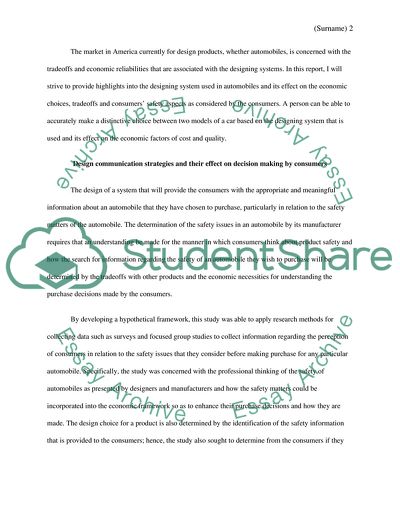Cite this document
(Design Choices for Economic Necessities, Reliability, and for Consumer Coursework Example | Topics and Well Written Essays - 2750 words, n.d.)
Design Choices for Economic Necessities, Reliability, and for Consumer Coursework Example | Topics and Well Written Essays - 2750 words. https://studentshare.org/engineering-and-construction/1816225-design-choices-for-economic-necessities-reliability-tradeoff-and-for-consumer-safety
Design Choices for Economic Necessities, Reliability, and for Consumer Coursework Example | Topics and Well Written Essays - 2750 words. https://studentshare.org/engineering-and-construction/1816225-design-choices-for-economic-necessities-reliability-tradeoff-and-for-consumer-safety
(Design Choices for Economic Necessities, Reliability, and for Consumer Coursework Example | Topics and Well Written Essays - 2750 Words)
Design Choices for Economic Necessities, Reliability, and for Consumer Coursework Example | Topics and Well Written Essays - 2750 Words. https://studentshare.org/engineering-and-construction/1816225-design-choices-for-economic-necessities-reliability-tradeoff-and-for-consumer-safety.
Design Choices for Economic Necessities, Reliability, and for Consumer Coursework Example | Topics and Well Written Essays - 2750 Words. https://studentshare.org/engineering-and-construction/1816225-design-choices-for-economic-necessities-reliability-tradeoff-and-for-consumer-safety.
“Design Choices for Economic Necessities, Reliability, and for Consumer Coursework Example | Topics and Well Written Essays - 2750 Words”. https://studentshare.org/engineering-and-construction/1816225-design-choices-for-economic-necessities-reliability-tradeoff-and-for-consumer-safety.


